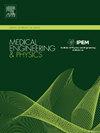Effects of mechanical stimuli on bone cells for regenerative medicine: A review of recent experimental and computational methods
IF 2.3
4区 医学
Q3 ENGINEERING, BIOMEDICAL
引用次数: 0
Abstract
Mechanobiology integrates biological and mechanical cues to provide a comprehensive understanding of how physical forces influence tissue regeneration, specifically focusing on bone growth and repair. This review presents a comprehensive overview of the latest developments in bone mechanobiology and highlights the remaining scientific and methodological challenges. Following a brief presentation of the challenges facing cell therapy, and in particular the application of different types of mechanical stimuli, the article examines these various processes on cells and tissues such as compressors and bioreactors operating at low frequencies (in the Hz range). Special attention is given to cutting-edge ultrasound techniques, such as the LIPUS method with MHz frequencies and low intensities ranging from 0.5 to 100 mW/cm², and with an emphasis on the emerging application of acoustic levitation with frequencies ranging from 340 kHz to 2.12 MHz permitting non-invasive manipulation of cells and tissues in biological research, with initial beneficial results in cell therapy. Lastly, the review offers a detailed analysis of multi-scale and multi-physics in silico approaches that may contribute to interpret the obtained experimental results. Agent-based models capture the discrete behaviour of individual cells, while continuum models describe tissue mechanics though averaged properties, offering complementary approaches to study complex mechanobiological phenomena. Such approaches hold the potential to drive transformative advances in bone regeneration medicine, providing a roadmap for future research.
机械刺激对再生医学中骨细胞的影响:最近实验和计算方法的综述
机械生物学整合了生物和机械线索,提供了物理力量如何影响组织再生的全面理解,特别是关注骨骼生长和修复。本文综述了骨力学生物学的最新发展,并强调了在科学和方法上的挑战。在简要介绍细胞疗法面临的挑战,特别是不同类型的机械刺激的应用之后,文章检查了细胞和组织上的这些不同过程,例如在低频(Hz范围内)操作的压缩机和生物反应器。特别关注尖端超声技术,如LIPUS方法,频率为MHz,低强度范围为0.5至100 mW/cm²,并强调频率为340 kHz至2.12 MHz的声悬浮的新兴应用,允许在生物研究中对细胞和组织进行非侵入性操作,并在细胞治疗中取得初步有益结果。最后,本文详细分析了可能有助于解释实验结果的多尺度和多物理场的计算机方法。基于主体的模型捕捉单个细胞的离散行为,而连续体模型通过平均特性描述组织力学,为研究复杂的力学生物学现象提供了补充方法。这些方法具有推动骨再生医学变革的潜力,为未来的研究提供了路线图。
本文章由计算机程序翻译,如有差异,请以英文原文为准。
求助全文
约1分钟内获得全文
求助全文
来源期刊

Medical Engineering & Physics
工程技术-工程:生物医学
CiteScore
4.30
自引率
4.50%
发文量
172
审稿时长
3.0 months
期刊介绍:
Medical Engineering & Physics provides a forum for the publication of the latest developments in biomedical engineering, and reflects the essential multidisciplinary nature of the subject. The journal publishes in-depth critical reviews, scientific papers and technical notes. Our focus encompasses the application of the basic principles of physics and engineering to the development of medical devices and technology, with the ultimate aim of producing improvements in the quality of health care.Topics covered include biomechanics, biomaterials, mechanobiology, rehabilitation engineering, biomedical signal processing and medical device development. Medical Engineering & Physics aims to keep both engineers and clinicians abreast of the latest applications of technology to health care.
 求助内容:
求助内容: 应助结果提醒方式:
应助结果提醒方式:


